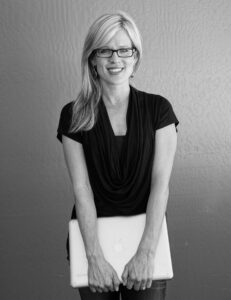
(Editor’s note: Here’s a link to Emily’s poster presented at ASHG.)
Earlier this year 23andMe began surveying its customers to study the genetics of sexual orientation. It is now the largest genome-wide association study of sexual orientation ever done.
Customer Interest
While our researchers have a strong scientific interest in looking at the understudied role genetics plays in sexual orientation, we started this work, in part, because of the large demand from our customers themselves. It is the most requested topic we’ve ever studied.
But we also began this work because the role genetics plays in sexual orientation is not well studied. The limited work done so far in the field suggests a person’s sexual orientation is partly heritable and our pioneering crowd-sourced research platform offered an opportunity to pursue this work.
As 23andMe scientist and research manager Emily Drabant said in a recent interview, we know it is a controversial area.
“I think it’s been hard for groups to get funding to pursue it,” Emily told the Advocate this month. “And maybe also taboo for various research groups to really focus on… But that’s the request that came up again and again and again: ‘Can you study sexual orientation? Why aren’t you studying sexual orientation?’”
There is No “Gay Gene”
We decided to launch the study.
“I think that the 23andMe platform is very conducive to doing research on sensitive topics because people are providing information anonymously from home,” she said. “So we were really excited to launch a study in that area.”
As Emily said our “objective is to be objective.”
Today we are presenting the first return of data we’ve gleaned from our work on sexual orientation at the American Society of Human Genetics annual meeting in San Francisco. As we continue to collect data and expand the number of participants we hope to improve the power of this study,
While our researchers did not find – nor did they expect to find – a “gay gene” or even a genetic variant that has a strong association with homosexuality, they did find some interesting routes of inquiry.
Participation in research
More than 24,000 customers have participated in the study so far, reflecting the high level of interest in the topic.
A little more than five percent of those people who took the survey identify themselves as solely homosexual, while about 74 percent identified themselves as solely heterosexual. The remainder identified themselves as either mostly, or somewhat homosexual or mostly or somewhat heterosexual, or they identified themselves as bisexual.
In the scientific literature, there are small heritability studies of identical and non-identical twins that have suggested sexual orientation is the product of both genetics and environmental factors.
But the strength of the evidence in these studies is limited due to conflicting reports and their small sample sizes.
Possible Genetic Associations
A few of the studies have pointed to possible candidate genes associated with homosexuality. Those were found on the X chromosome, specifically on band Xq28,. However, these studies have been small and only in men. When our researchers looked at band Xq28 they found no direct associations.
We found some gene regions where associations were suggestive. Yet, we did not find any that reached a statistical threshold of genome-wide statistical significance.
We believe that as the number of people participating in the study increases the role of the currently suggestive genetic associations may become clearer.
Our researchers did replicate previous findings that are unrelated to genetics. These associations and others will help in guiding our research. We will continue to conduct our work into the genetics of sexual orientation.
In developing the study we worked with multiple organizations to review our survey questions and help ensure that our research is conducted in an informed and sensitive manner. While these questions cover sensitive topics that some people may view as private, we were encouraged by the numbers of people willing to participate.
The work continues.



